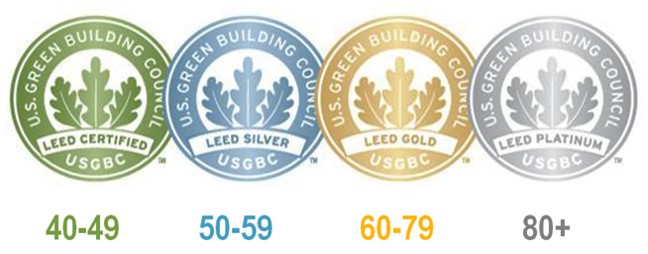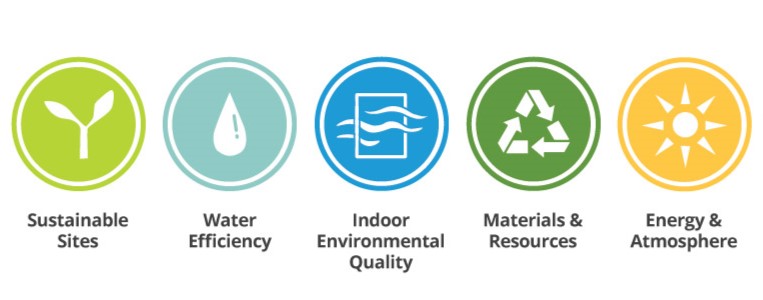LEED Certification: The Guide to Green
LEED, or Leadership in Energy and Environmental Design, is a certification system that denotes how “green,” or compliant in terms of energy and water efficiency, air quality, and building materials, a building is over the course of its design and construction. Designed by the U.S. Green Building Council (USBGC), LEED uses a point-scoring system for certification of a building or construction to one of four different levels:

Each project earns points according to how well it meets the requirements of the LEED standard. Your buildings score is made in the following five green design categories:
Steps for Certification
Ideally, time and energy will be invested early in the design phase where you have maximum flexibility to impact the design and coordinate towards your LEED goal objective. Here are the important steps in the LEED certification process:
1. Budget for certification. There is a registration and certification fee for any project. Registration is a flat fee paid at the time of registration; rates are based on the fee schedule published at the time of registration. The certification fee is based your project’s rating system and size; it is calculated and paid when the project team submits documentation for review. There are also additional project costs in documentation preparation for certification (typically, 1-2% of total construction budget on average). However, you may qualify for government incentives. For example, the USGBC states, “LEED buildings have faster lease-up rates and may qualify for a host of incentives like tax rebates and zoning allowances. Not to mention they retain higher property values”.
2. Determine your target certification level. LEED certification is an investment, and determining your minimum certification level early is critical to your project’s success. Your LEED goal is important and each additional level may require more effort. Identifying your goal early will outline the requirements to allow your project team to make decisions that will result in efficient and cost-effective impacts on your LEED strategy.
3. Include LEED experts. Architects, engineers, and planners who know about the LEED certification can guide you through the process. 3R provides high-performance building consulting to integrate and optimize all major building performance attributes, including energy efficiency, durability, life-cycle performance, and occupant productivity. 3R is uniquely qualified to integrate its building design consulting with broader environmental and energy management consulting to deliver LEED certification.
4. Register your project at LEED Online. The LEED application, review and certification process is handled online. On the LEED Online website, select the rating system applicable to your project. There are many options, but five major rating systems:
5. Document and upload information to LEED Online according to the specific LEED points or credits that you want to pursue. 3R recommends a quality check of each credit to make sure the documentation is entered accurately and consistently. Have you submitted plans that have changed since design? This may be stating the obvious for companies used to meticulously checking their estimates, bids, and so on.
However, with the effort and money involved in LEED certification, extra verification will save both time and potential appeal costs.
6. Finalize and submit your application. There are multiple options for review submission. This can be done in two steps, using a LEED standard review or it can be in as many as four separate steps with both a design and construction review. In a design review and a construction review, each stage is further split into a preliminary and a final review. The project team will also have optional appeal phases for an added cost, if necessary.
LEED Certification
7. Certification done by a LEED accredited third party. Depending on the final points awarded for your project, you’ll receive a certified, silver, gold, or platinum rating.
